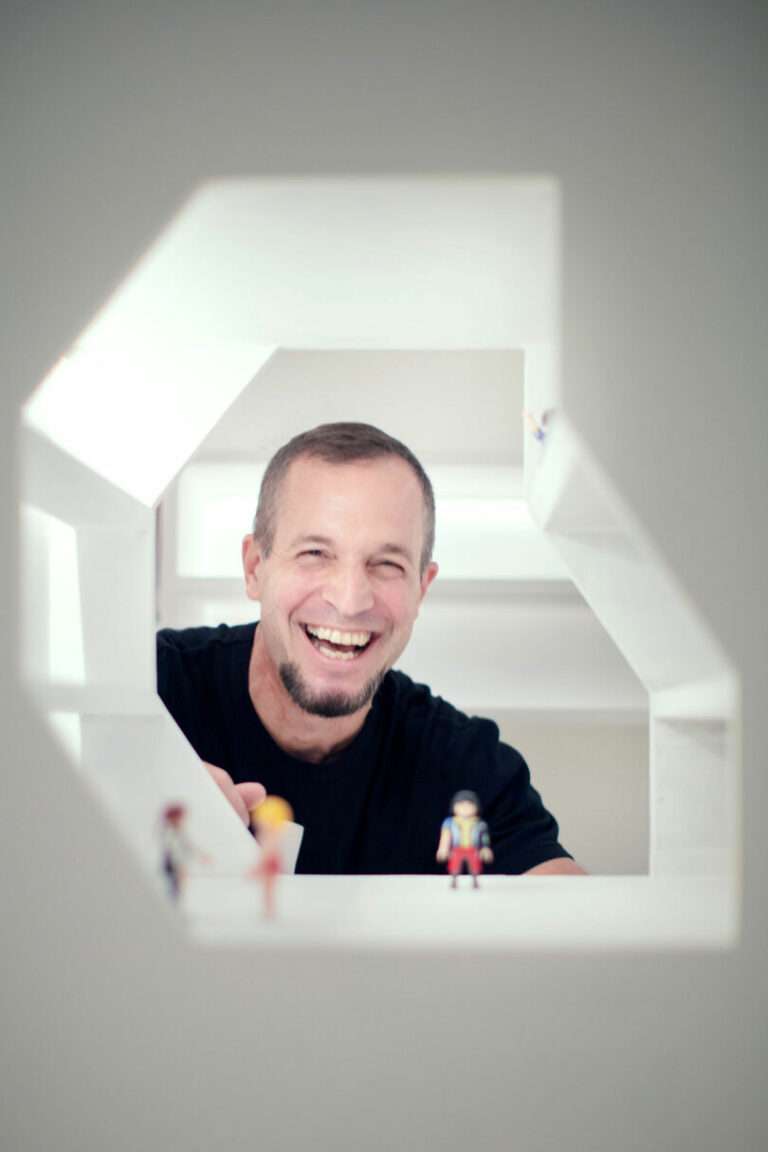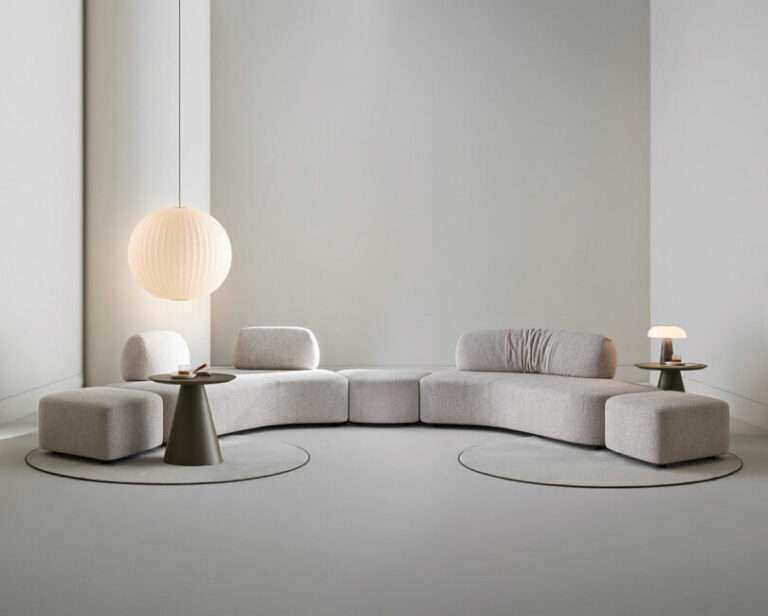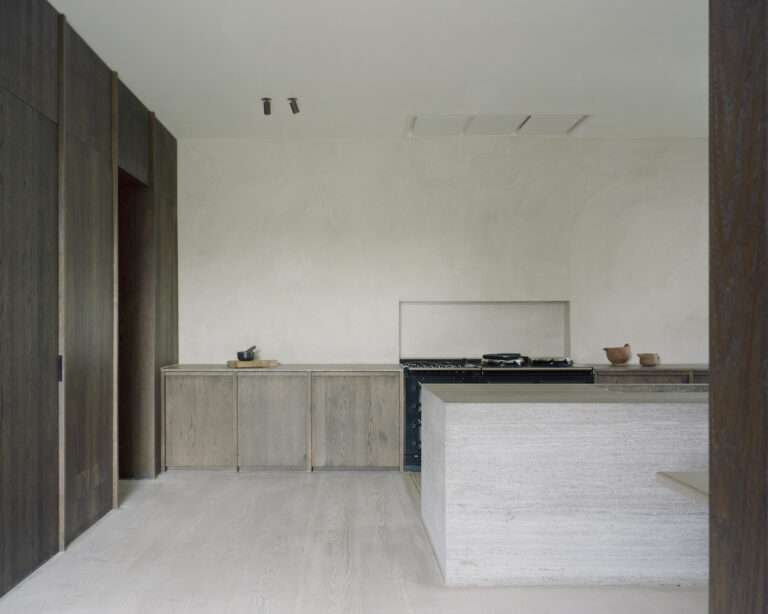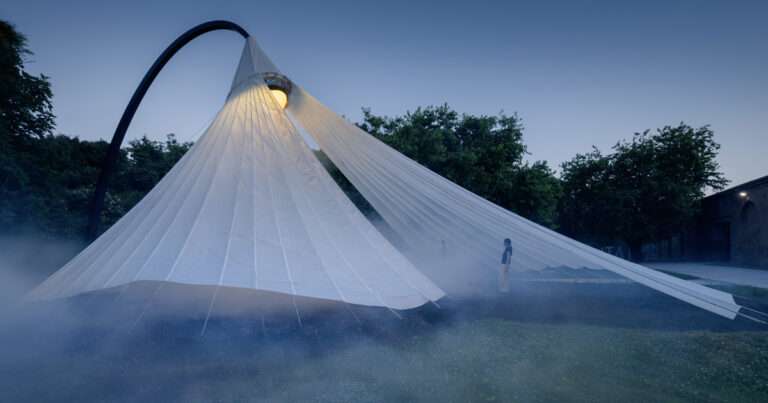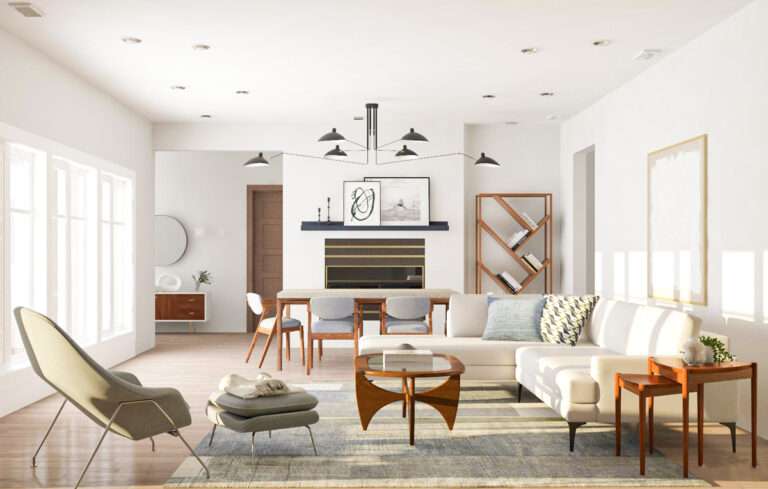In the heart of the Galapagos Islands, SULA, a prefabricated A-frame cabin designed by Diana Salvador defies convention. Built with a blend of wood, stone, metal, glass, and PVC, SULA is not just a house – it’s a testament to human ingenuity and environmental consciousness. Imagine designing and constructing a house in continental Ecuador, only to transport it in thousands of pieces to the remote Galapagos Islands for assembly. SULA’s two-month design build in Quito, Ecuador, resulted in approximately 2,000 custom-made components, held together by over 17,000 screws and pins. These meticulously crafted elements were then bundled into two containers, braving a voyage across the sea to Santa Cruz Island.
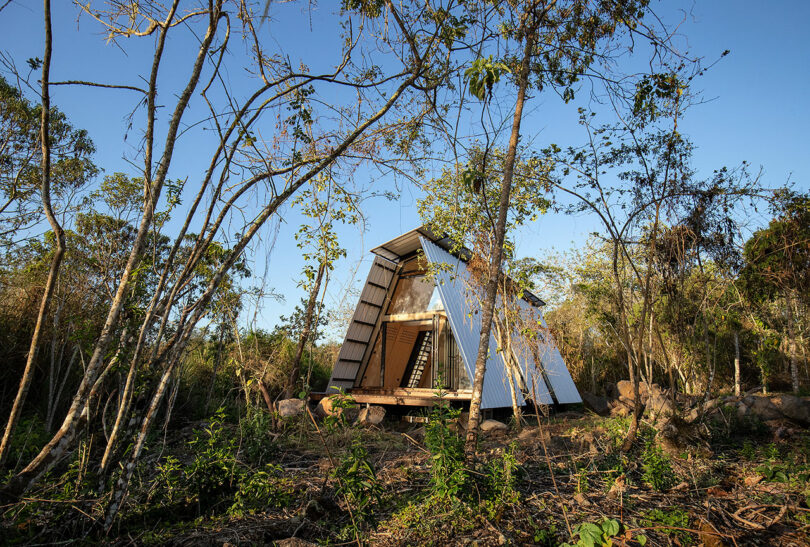
The assembly of SULA was a collaborative effort, involving four plant technicians and six floating employees who traveled from the mainland. Their specialized skills transformed all the bits and pieces into an architectural marvel over the span of four weeks.

SULA was custom designed for Catalina and her family, Galapagos residents for over four decades. The design focused on creating a harmonious living space that respects both its users and the environment.

SULA is more than just a cool modern cabin – it’s a symbol of environmental responsibility and innovation. It demonstrates that a high-quality, sustainable infrastructure can be created without having a negative impact on the environment.

While maybe not a traditional A-frame with a tall, triangular roof, SULA has a flat top that resembles an “A” in a different font without a cap.
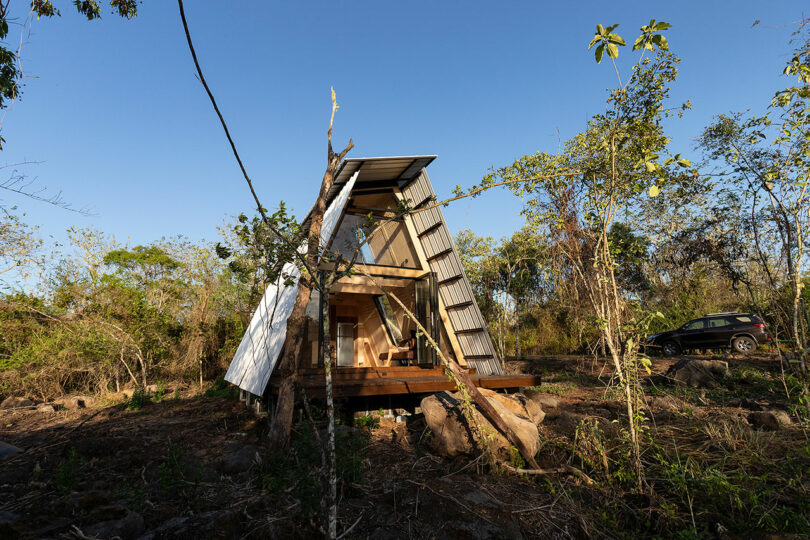
What sets SULA apart is its scalability, transportation flexibility, and adaptability to different environments. The house can be disassembled and relocated, making it a true architectural puzzle. The use of gabions as foundations minimizes the use of concrete and ensures that the ground and soil are unaffected during installation or removal.
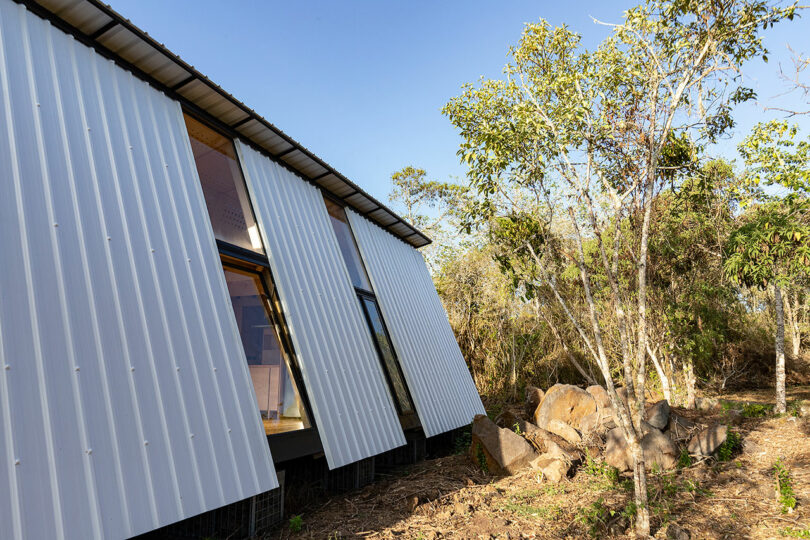
The cabin seamlessly integrates five key materials – wood, stone, metal, glass, and PVC – in an environmentally balanced manner. Each material was carefully chosen for its efficiency and flexibility. Plywood plays a pivotal role in the home’s structure, interior walls, and furniture, while PVC sheets act as waterproof covers.
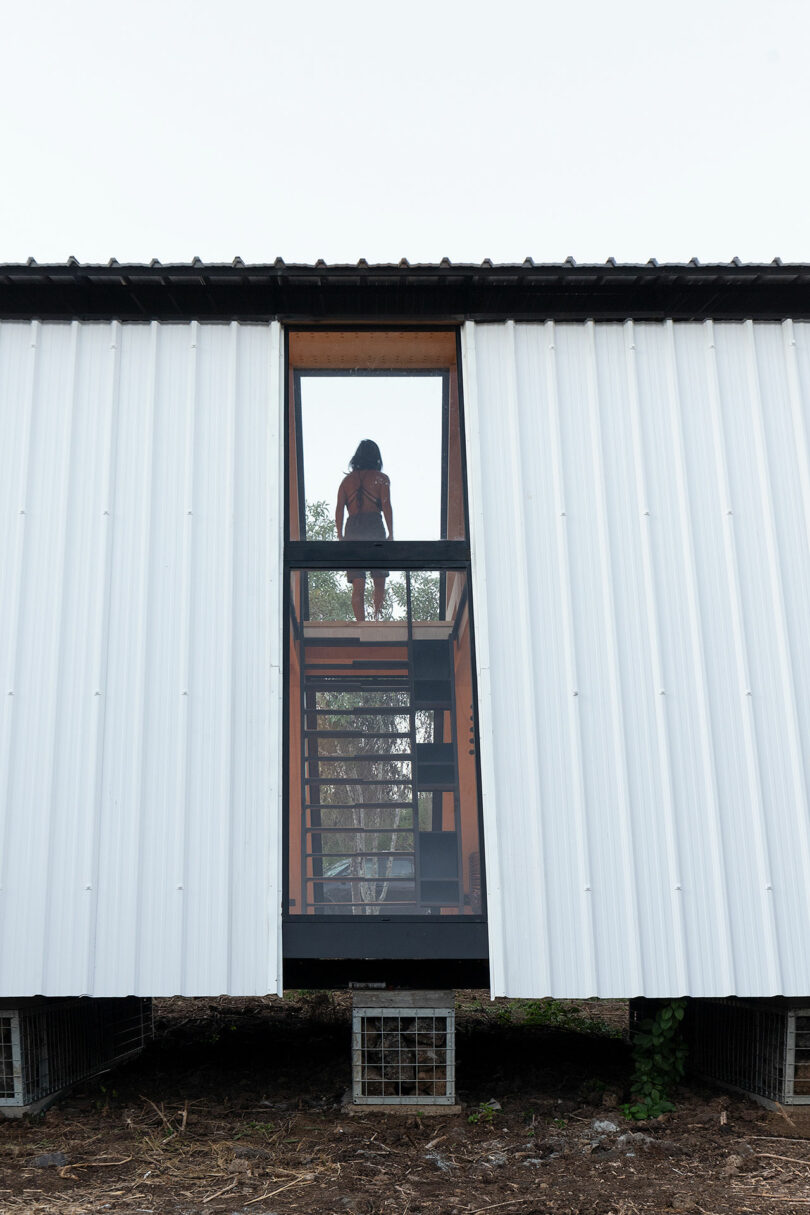
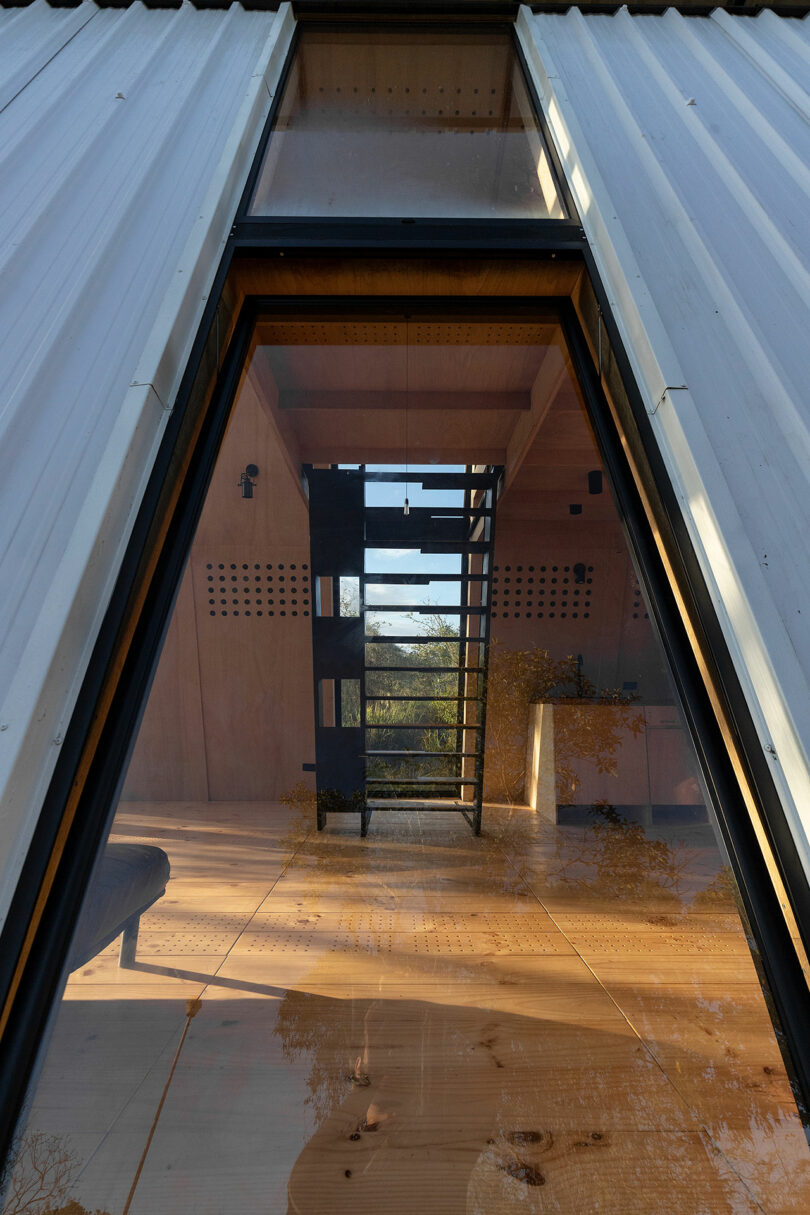
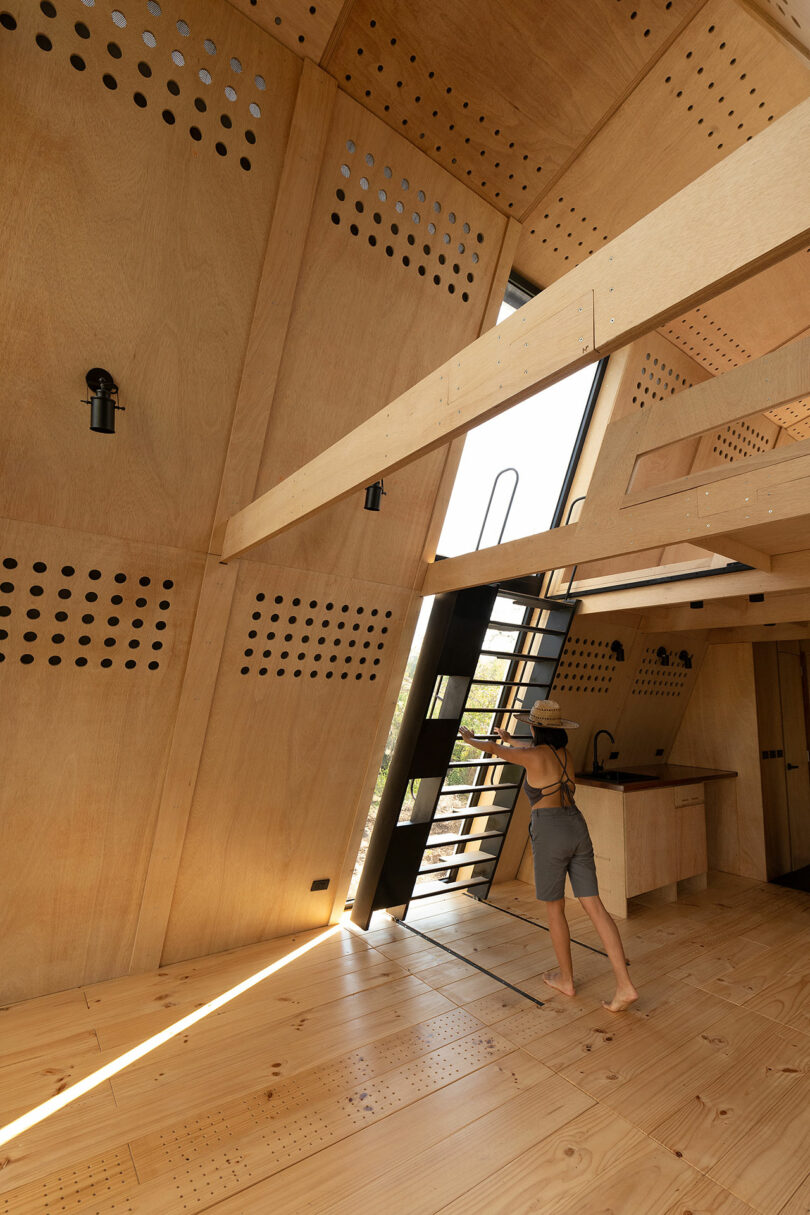
The interior feels larger and more open thanks to windows on either end of the cabin and two narrow windows on the sides. The light colored wood bounces natural light around the double-height space.
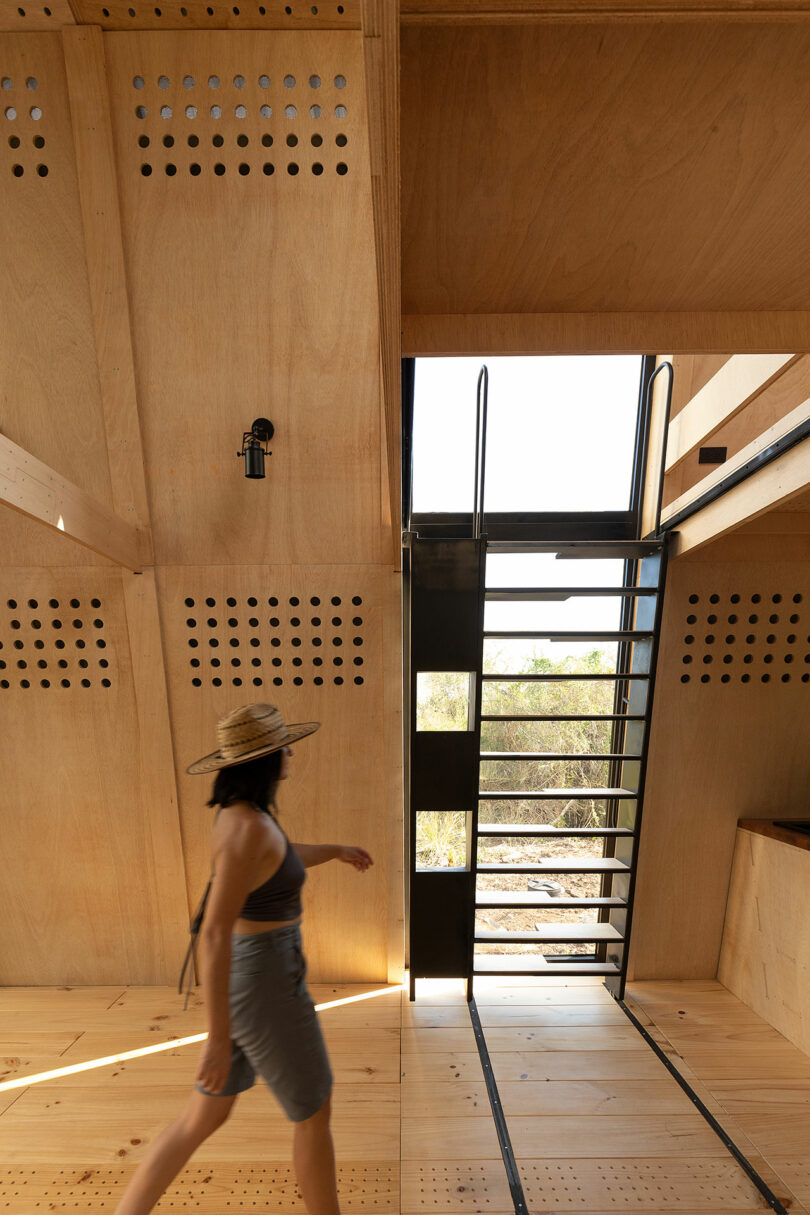
A black metal ladder staircase can be pressed against the window to open up the floor space or slid into the middle of the room to provide access to the second floor.

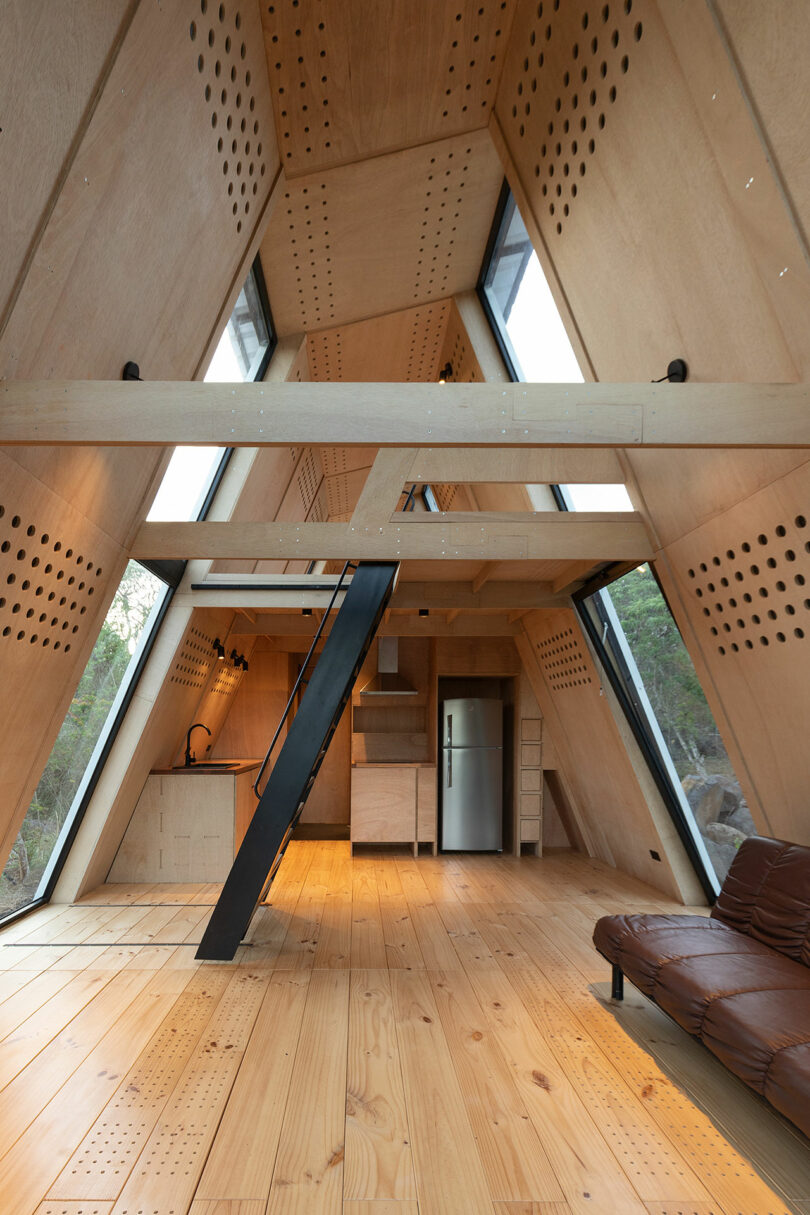
A simple kitchen separates the open living room from the bedroom for extra privacy.

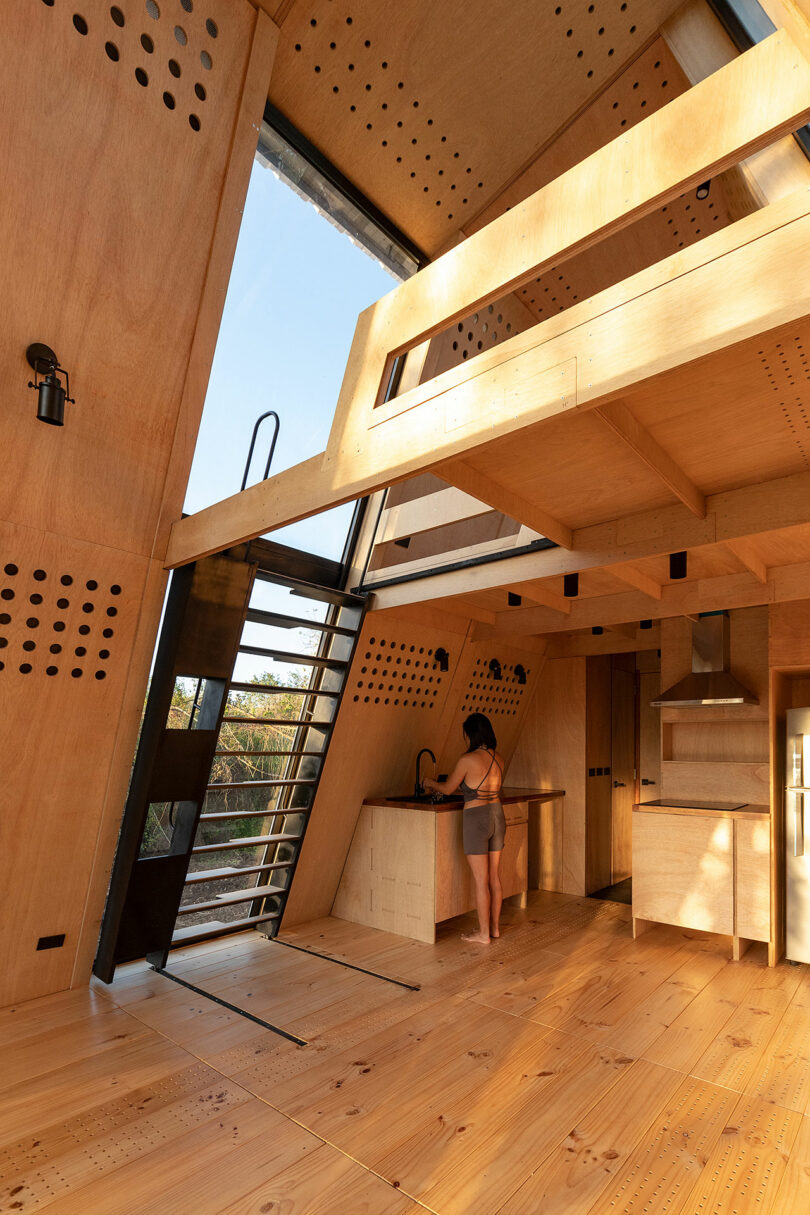
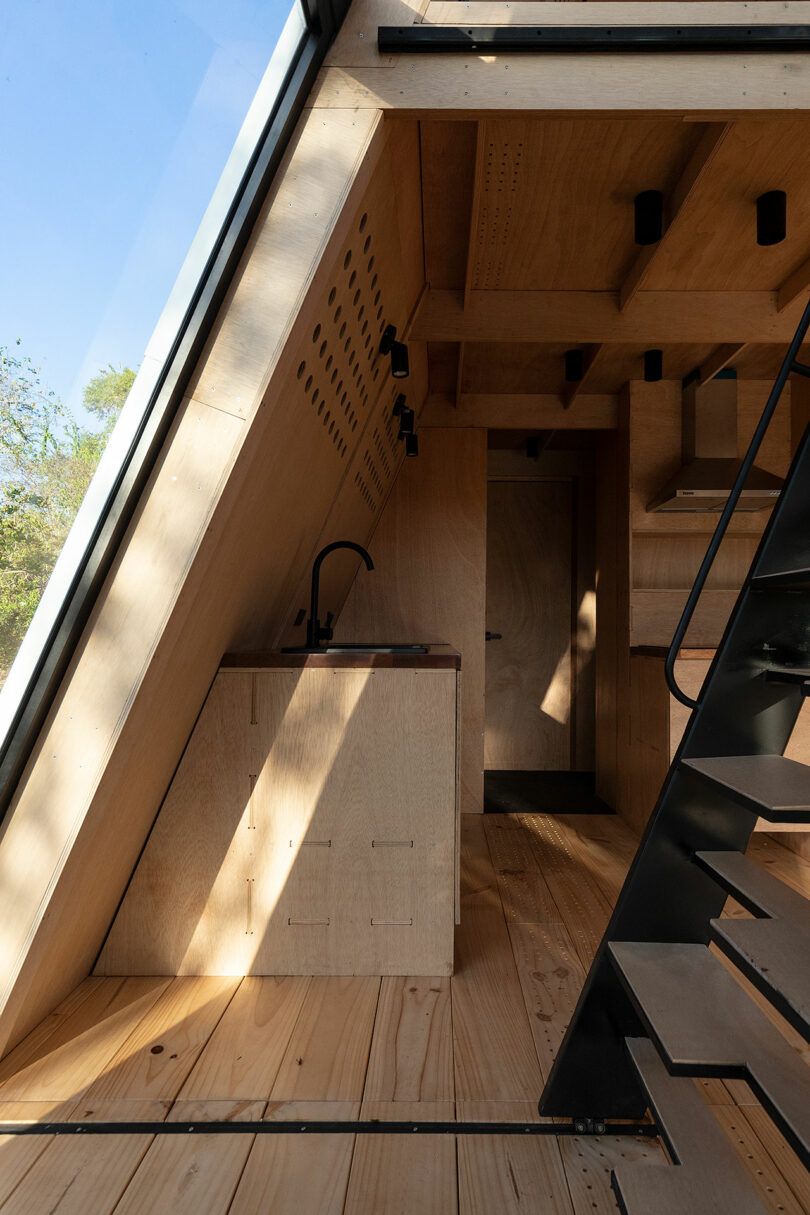

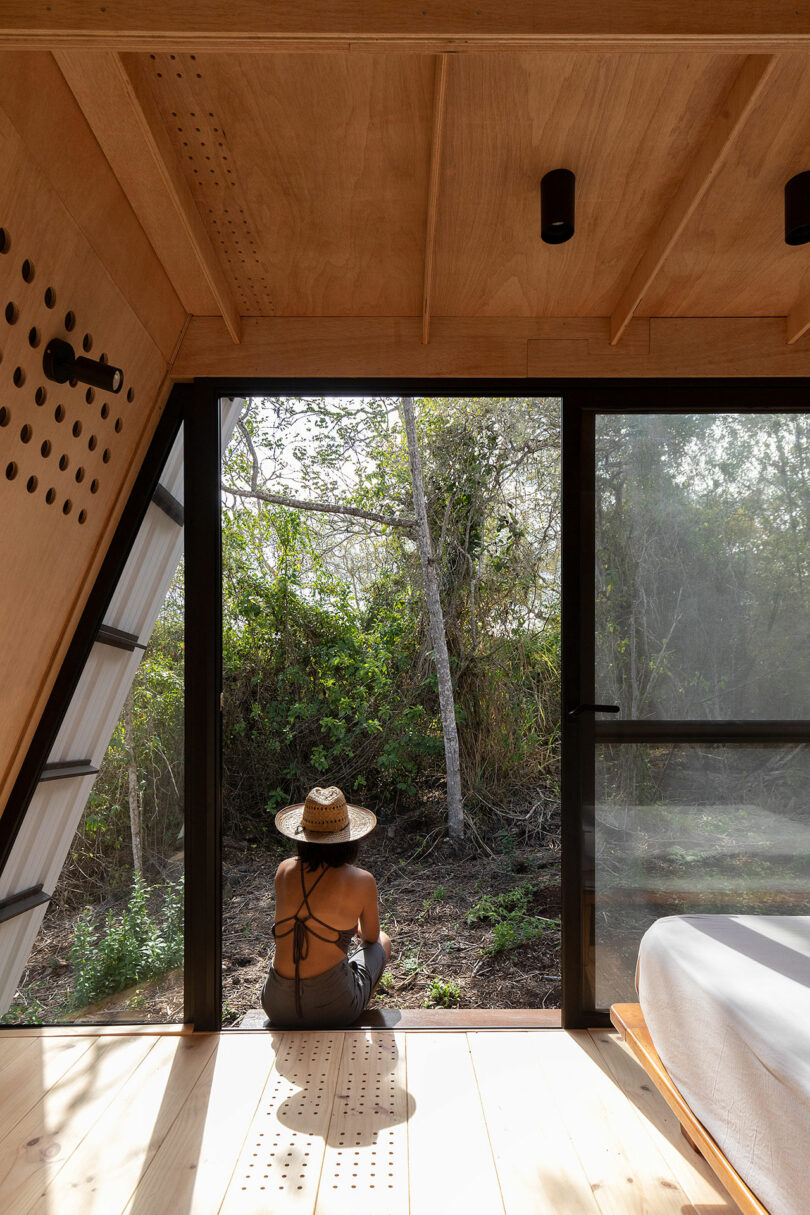
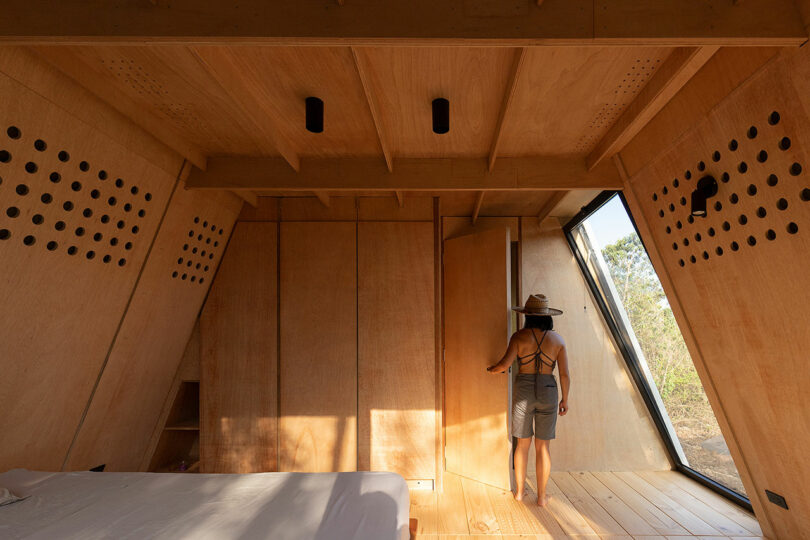
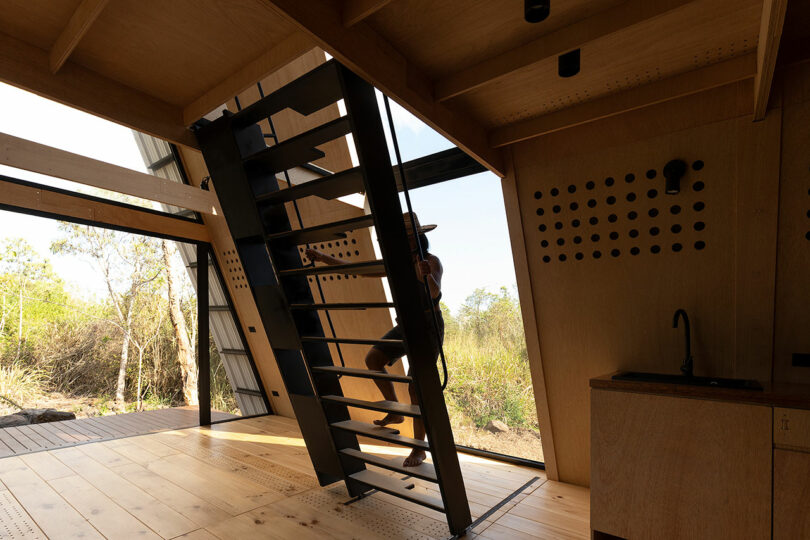
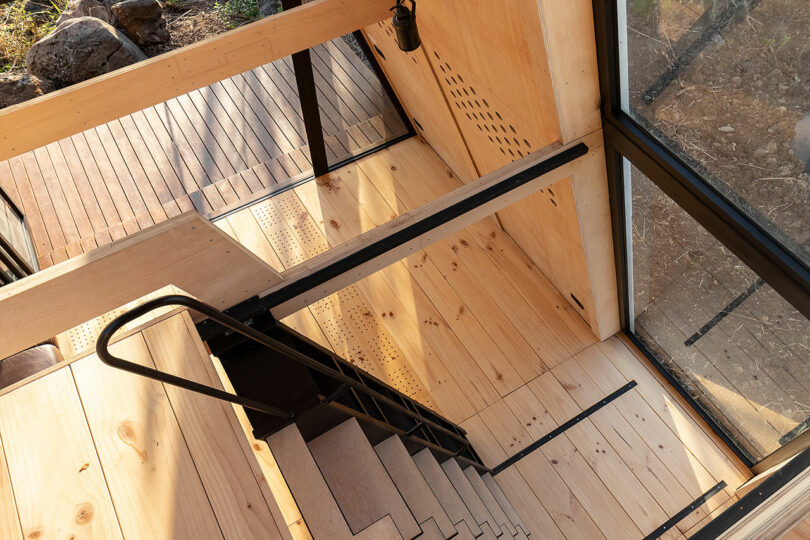
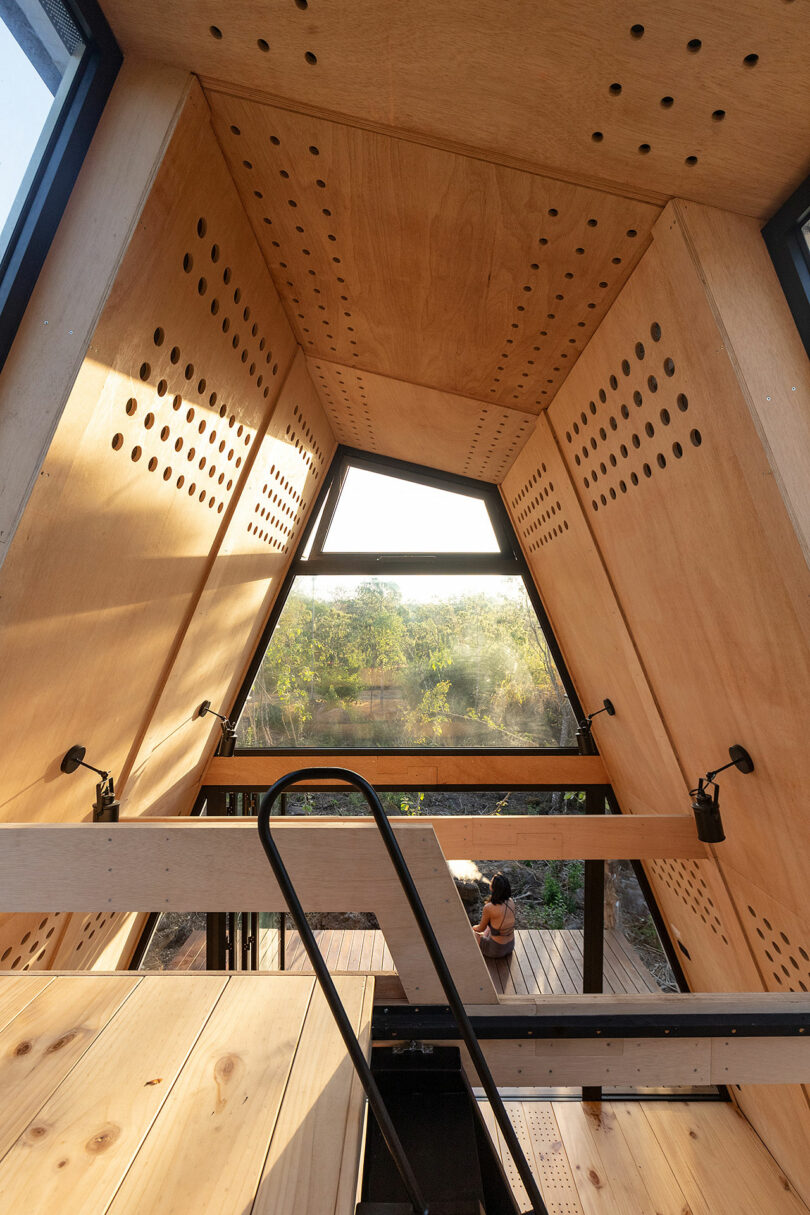
An upstairs loft provides additional space that can be another bedroom, office, or yoga studio.
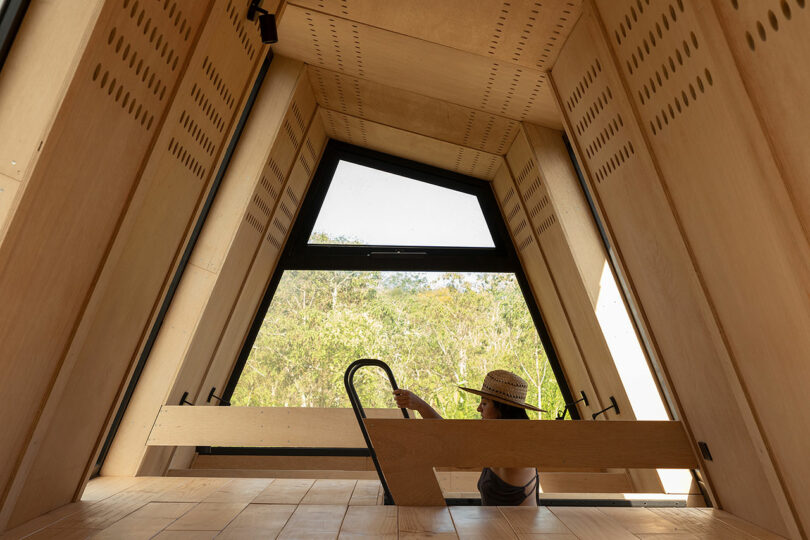

Photography by Jag Studio.

